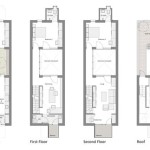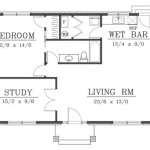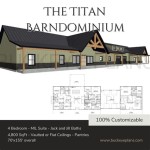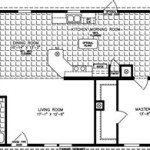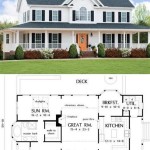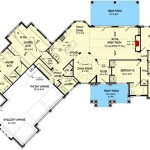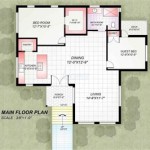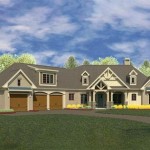Understanding the Split Level Home Floor Plan
The split level home, a popular architectural style prevalent from the mid-20th century onward, presents a unique floor plan distinguished by staggered levels connected by short flights of stairs. This design sought to maximize space efficiency, offer a separation of living areas, and often accommodate sloping lots effectively. Understanding the nuances of a split level floor plan is crucial for potential buyers, sellers, renovators, and anyone seeking a deeper appreciation of residential architecture.
Unlike traditional two-story homes where floors stack directly upon one another, the split level home features levels that are horizontally offset. This offsetting is typically achieved by dividing the home vertically into sections, with each section raised or lowered by a half-story relative to its adjacent section. This arrangement creates a series of short staircases, promoting a continuous flow while subtly delineating different living areas.
The common layout often positions the main living areas, such as the living room, dining room, and kitchen, on one level, typically at or near ground level. A short flight of stairs leads to the bedrooms, usually situated above the garage or another living space. Below the main level, often partially underground, is a recreation room, family room, or finished basement. This lower level might also house the laundry area, a half-bath, or additional storage.
The defining characteristic of a split level home is its efficient use of space and its adaptability to varied terrain. The staggered levels allow for a feeling of spaciousness within a relatively compact footprint. The design also contributes to a degree of privacy, separating sleeping quarters from the more active living and recreation areas. However, these benefits come with certain considerations, such as the potential for awkward transitions and the challenges of navigating multiple short staircases.
Key Point 1: The Origins and Evolution of the Split Level Design
The split level home emerged as a response to the growing demand for affordable and functional housing in the post-World War II era. The style gained popularity during the suburban expansion of the 1950s and 1960s, driven by factors such as increased car ownership, the desire for spacious living, and the availability of relatively inexpensive land on the outskirts of cities. Builders sought to maximize usable space on smaller lots while providing a distinct separation of living areas.
Early split level homes often featured simple, rectangular floor plans with minimal ornamentation. As the style evolved, variations emerged, incorporating more complex layouts, expanded living spaces, and updated architectural details. Ranch-style influences were often integrated, resulting in hybrid designs that blended the horizontal emphasis of the ranch with the vertical staggering of the split level. Common exterior features included large picture windows, low-pitched roofs, and attached garages.
Several factors contributed to the popularity of the split level design. Its adaptability to sloping lots allowed builders to utilize land that would have been difficult or expensive to develop using traditional construction methods. The staggered levels provided a natural separation of living areas, offering a degree of privacy that was highly valued by growing families. The efficient use of space made it possible to create comfortable and functional homes within relatively compact footprints.
Over time, the split level design experienced periods of both popularity and criticism. While some appreciated its practicality and affordability, others found its layout to be awkward or aesthetically unappealing. However, the core principles of the split level design – efficient space utilization, separation of living areas, and adaptability to varied terrain – continue to resonate with homeowners today.
Key Point 2: Common Variations and Floor Plan Layouts
The split level home encompasses several variations, each characterized by a slightly different arrangement of levels and living spaces. Understanding these variations is essential for identifying the specific type of split level floor plan and for assessing its suitability for individual needs and preferences.
The most prevalent variation is the "side split," where the house is divided horizontally, with one side raised a half-story above the other. Typically, the entry level houses the main living areas, such as the living room, dining room, and kitchen. A short flight of stairs leads to the upper level, containing the bedrooms and bathrooms. The lower level, often partially below grade, houses the recreation room, laundry area, and garage.
Another common variation is the "back split," where the garage is located at the rear of the house, partially or fully below grade. The entry level typically features the main living areas, while a short flight of stairs leads to the bedrooms above. The lower level, accessible from the main entry or the kitchen, houses the recreation room and laundry area.
A less common, but still notable variation is the "four-level split," which adds an additional split level to create four distinct living zones. This design often incorporates a formal living room on the main level, a family room on a level slightly below, bedrooms on a level above, and a finished attic or bonus room as the fourth level. This variation provides maximum separation of living areas and accommodates larger families.
Irrespective of the specific variation, split level floor plans generally prioritize functionality and efficient space utilization. The staggered levels create a natural flow between different living areas, while also providing a degree of privacy and separation. However, the numerous staircases can present challenges for individuals with mobility issues.
Key Point 3: Advantages and Disadvantages of the Split Level Design
Like any architectural style, the split level home presents both advantages and disadvantages. Understanding these factors is crucial for making informed decisions about buying, selling, or renovating a split level property.
One of the primary advantages of the split level design is its efficient use of space. The staggered levels allow for a relatively large living area within a compact footprint. This is particularly beneficial on smaller lots, where maximizing usable space is a priority. The design also allows for a natural separation of living areas, providing a degree of privacy and reducing noise transmission between different parts of the house.
The split level design is also well-suited for sloping lots. The staggered levels can be adapted to the terrain, minimizing the need for extensive grading or excavation. This can result in significant cost savings during construction and can also help to preserve the natural landscape.
However, the split level design also presents certain disadvantages. The numerous staircases can be challenging for individuals with mobility issues, such as the elderly or those with disabilities. The staggered levels can also create awkward transitions between different living areas, particularly in older homes with less open floor plans. Heating and cooling can also be less efficient in split level homes, as the different levels may experience varying temperatures.
Furthermore, the architectural style of split level homes might not appeal to all buyers. The design can be perceived as dated or lacking in aesthetic appeal. However, with thoughtful renovations and updates, split level homes can be transformed into stylish and functional living spaces. Updating the exterior facade, opening up interior walls, and modernizing the finishes can significantly enhance the appeal of a split level home.
Ultimately, the decision to buy, sell, or renovate a split level home depends on individual needs, preferences, and priorities. While the design presents certain challenges, its efficient use of space, adaptability to sloping lots, and potential for renovation make it a viable option for many homeowners.
The layout, as discussed earlier can present specific concerns. For example, in some split-level designs, the entrance might open directly onto a flight of stairs, which can be unappealing or unsafe for some.
The appeal of a split level home also often comes down to its location. Because the style was popular in specific eras and regions, they tend to be concentrated in certain suburban areas. The surrounding neighborhood and its amenities can greatly impact the desirability of a split-level home.
Finally, prospective buyers should also consider the potential resale value of a split-level home. While some buyers might be attracted to the unique features of this architectural style, others might prefer more conventional home designs. Understanding the local real estate market and the demand for split-level homes can help buyers make informed investment decisions.
Split Level Homes Designs G J Gardner

Split Level House Plans And Foyer Floor

4 Bedroom Split Level House Plan 2136 Sq Ft 2 Bathroom

Familyhomeplans Com Plan Number 45253 Order Code 01web Split Level House Plans Modular Home Floor

Split Level Home Designs Stroud Homes

Plan 8963ah Split Level Home Floor Plans House Remodeling

Split Level House Plans Home Design 3266

Split Level Traditional Home Plan With Mudroom 22171sl Architectural Designs House Plans

Modern Split Level House Plans And Multi Floor Plan Designs

Split Foyer Plan 1678 Square Feet 3 Bedrooms 2 Bathrooms Alexis Level Floor Plans Basement House

